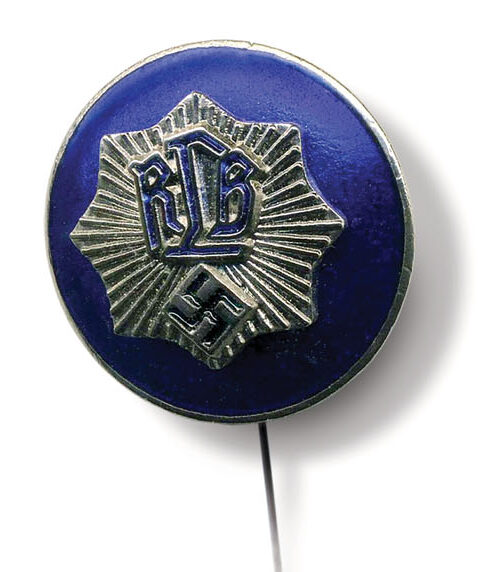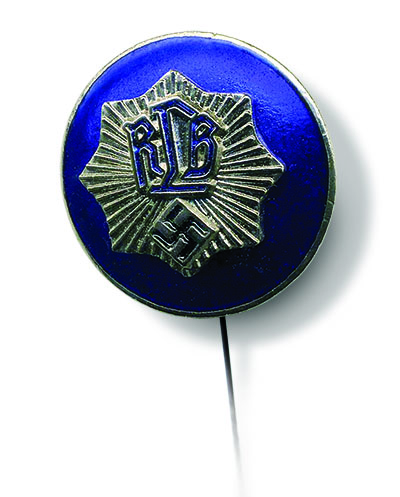I hope World War II historians can identify this Nazi-era stickpin. The front, which is about the size of a nickel, has three letters or symbols, along with a swastika. The back has words or abbreviations arranged in circular fashion reading: “G. BREHMER MARKNEUKIRCHEN” and “GES. GESCH.”
I acquired the pin by trading with a schoolmate as an elementary school student, circa 1950. —Robert A. Jones, Brandon, Mississippi
This stickpin would have been issued to a member of the Reichsluftschutzbund (RLB), or National Air Raid Protection League—a program established on April 29, 1933, by the Reich’s Ministry for Air Defense. The markings on the back indicate the manufacturer and place of origin; the term “Ges. Gesch.” is essentially a copyright mark.
The RLB was a civil defense outfit charged with preparing for and responding to air raids. Initially a volunteer association under the German air ministry, the RLB had about 15 million members (out of a population of some 80 million) by 1939. By 1944, with the Allied bombing campaign operating with a vengeance, the RLB was incorporated into the Nazi Party and participation in the organization became compulsory. The League was divided into groups responsible for specific blocks and neighborhoods, with air raid wardens overseeing response teams.
The National WWII Museum’s collection contains a related item—a flag from the RLB’s Frankfurt am Main zone, the western regional group. As with much of our material, an American serviceman—Edward F. “Boots” Booth, who served in Europe with the 69th Armored Regiment and was wounded during the Battle of the Bulge—collected and kept the item as a souvenir. —Kimberly Guise, Assistant Director for Curatorial Services ✯
This story was originally published in the January/February 2017 issue of World War II magazine. Subscribe here.






